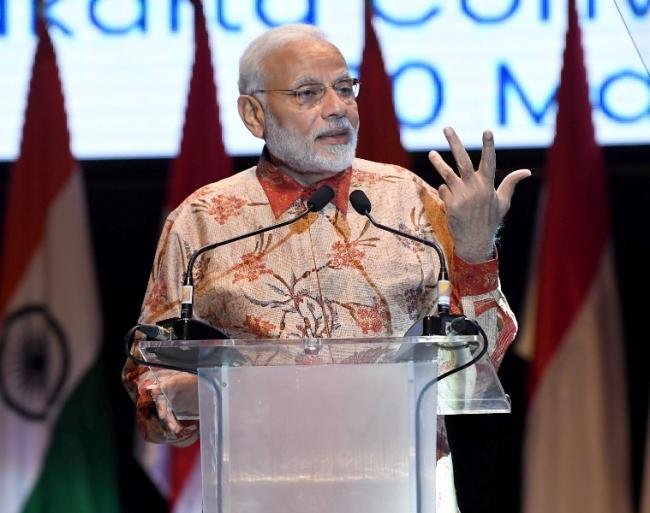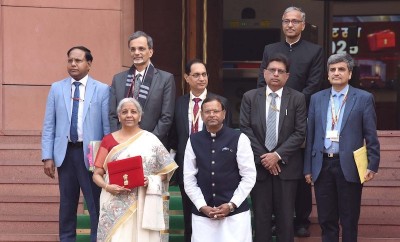
Deeper regional trade, connectivity has potential to more than triple India’s trade with South Asian countries: World Bank
Kolkata, Sept 24 (IBNS): Deeper regional trade and connectivity has the potential to more than triple India’s trade with its South Asian neighbors, says a new World Bank report.
A Glass Half Full: The Promise of Regional Trade in South Asia, estimates India’s potential trade in goods with South Asia at $62 billion against its actual trade of $19 billion, which is a mere 3 percent of its global trade and about $43 billion below its potential.
All countries in the region stand to gain from increasing trade cooperation, the report says. For example, for India, deeper regional trade and connectivity can reduce the isolation of Northeast India, give Indian firms better access to markets in South Asia and East Asia, and allow it to substitute fossil fuels by cleaner hydropower from Nepal and Bhutan. Indian consumers will also gain from availability of greater variety of consumer goods at cheaper prices. Trade between India and Pakistan today is a mere $2 billion. The report shows that without trade barriers, this could be $37 billion.
Today, countries around the world harness the potential of intraregional trade to prosper together with their neighbors. However, while intraregional trade accounts for 50 percent of total trade in East Asia and the Pacific and 22 percent in Sub-Saharan Africa, it forms only 5 percent of South Asia’s total trade.
Have there been any breakthroughs?
India, the report points out, can play a critical role in regional cooperation for mutual economic and welfare gains. It highlights two specific examples of cooperation in the region that sheds light on both the barriers and the opportunities related to regional trade and connectivity.
An initiative by the governments of Bangladesh and India aimed at recapturing the once thriving economic and cultural relationships is now changing cross border relations and reducing incentives for smuggling. This is occurring through haats (local border markets) that enable small-volume trading among local communities on both sides of the border.
Surveys done for this study confirm significant increase in incomes of vendors in both Bangladesh and India and growth in livelihoods opportunities for women and marginalized workers. For example, Indian laborers at the haats, earn one-third or more of their average monthly income from just four days of working at haats. Focus group discussions with stakeholders and interviews with Border Security Force personnel, conducted specifically for this study, reveal that the haats have also led to a reduction in informal and illegal trading, and generated a peace dividend.
Another example is the progressive liberalization of India-Sri Lanka air services, which has improved connectivity, reduced air fares, and increased passenger traffic and air cargo volume. Today, Indians and Sri Lankans enjoy direct connections from Colombo to 14 Indian cities, with a total of about 147 flights per week. Since 2005, India has been the largest source of foreign tourists in Sri Lanka.
Barriers to trade
Intraregional trade in South Asia falls short of its potential because of significant barriers. This report addresses four specific barriers that have constrained trade within South Asia: tariff and para tariff barriers; nontariff barriers, examined through the lens of selected products in Bangladesh–India and India–Nepal trade; the high costs of connectivity investigated using the India-Sri Lanka air travel agreement as a case study; and the trust deficit among South Asian countries, which underscores the importance of people-to-people interactions through initiatives such as the Bangladesh–India border haats program.
Despite significant liberalization in tariff regimes by South Asian countries since the 1980s, average tariffs are still high. In 2016, average tariffs in South Asia where 13.6 percent, more than double the world average (6.3 percent) and the highest among major regions of the world despite a regional free trade agreement (SAFTA) that came into force in 2006.
The study highlights two critical reasons that stand out in explaining the deficit in SAFTA’s performance. First, each country maintains a long “sensitive” list of products that are exempted from the tariff liberalization program. Almost 35 percent of the value of intraregional trade in South Asia is subject to sensitive list tariffs; over 39 percent of India’s exports to the region fall under the sensitive lists of various partners. Also, several countries in the region maintain high para tariffs (that is, duties imposed on imports, but not on domestic production), which have not been included in the tariff preference programs in free trade agreements. Among the major economies in South Asia, Bangladesh, Pakistan, and Sri Lanka main high para tariffs.
This report also examines the Non-Tariff Measures (NTMs) in bilateral trade between Bangladesh and India and between India and Nepal in selected products. Lack of awareness among exporters on regulations and standards in partner countries plays a big role in creating misperceptions about NTMs. A proactive approach is needed to address information asymmetries, while also enhancing infrastructure and simplifying procedures, the report says.
Recommendations
The report recommends an approach of open regionalism, and views intraregional trade as complementary to, and as a stepping stone for, deeper global integration. “Given the context of South Asia, an incremental approach toward deeper trade cooperation can be very powerful, and the region has witnessed examples of this in the form of India-Sri Lanka air services liberalization and India-Bangladesh border haats,” said Sanjay Kathuria, Lead author of the report and Lead Economist, World Bank. “Given its complicated history, size asymmetries, and a trust deficit, small steps backed by policy persistence is probably the right way to go for South Asia,” Kathuria added.
Other specific recommendations are as follows:
· Border tax distortions: The report suggests targeting sensitive lists and paratariffs to enable real progress on SAFTA.
· Nontariff barriers: The analysis points to a multi-pronged effort, focusing on information flows, procedures, and infrastructure.
· Connectivity costs: Policy makers can draw several lessons from the India-Sri Lanka air services liberalization experience, where liberalization was gradual and incremental, but policy persistence paid off.
· Mutual trust deficits: South Asian policy makers can address their mutual trust deficits by reinforcing the virtuous circle between trade and trust – the experience of Bangladesh-India border haats offer several useful insights in this context.
The experience of ASEAN and East Asia, more broadly, can serve as a useful reference point for policy makers in South Asia.
Support Our Journalism
We cannot do without you.. your contribution supports unbiased journalism
IBNS is not driven by any ism- not wokeism, not racism, not skewed secularism, not hyper right-wing or left liberal ideals, nor by any hardline religious beliefs or hyper nationalism. We want to serve you good old objective news, as they are. We do not judge or preach. We let people decide for themselves. We only try to present factual and well-sourced news.







